Sydney’s $64BN Mega Railway
- Youtube Views 1,313,507 VIDEO VIEWS
Video narrated and hosted by Fred Mills.
SYDNEY is getting bigger. A lot bigger. The Australian city is in the middle of building one of the biggest suburban rail projects in the world.
This is a $64BN infrastructure megaproject unrivalled in size and scope, extending the city in nearly every direction.
By 2030, Sydney will have 113 kilometres of new metro rail and 46 new stations. Driverless trains will run every four minutes beneath the harbour and CBD.
The country’s largest underground railway cavern has been created in the process, as well as its longest transport tunnels.
Not since the Harbour Bridge, built almost a century ago, has Sydney constructed such a colossal city-defining project.
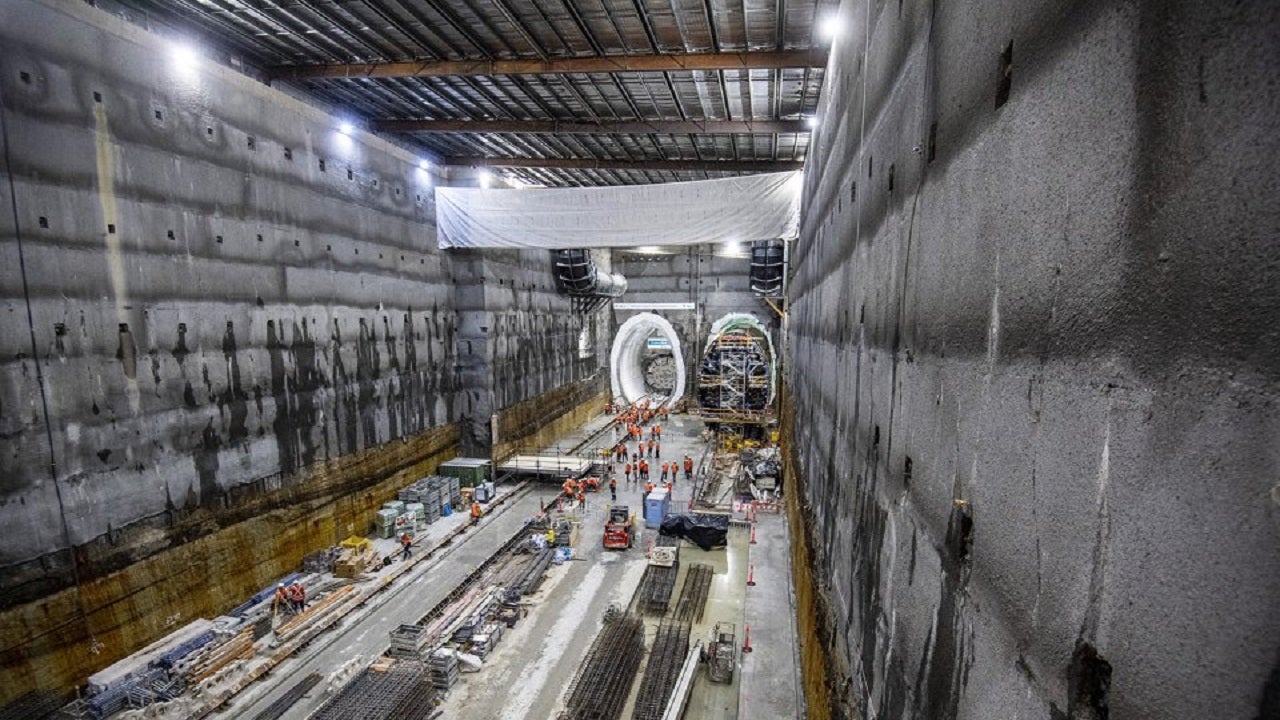
Above: The Sydney Metro is one of the biggest rail construction projects in the world. Image courtesy of Sydney Metro.
Sydney is a city divided. Its iconic harbours make for beautiful postcards but are an urban planner’s nightmare. The north and south of the city are completely cut off from each other.
The history of Sydney’s infrastructure has been the history of bridging this gap — most famously, and literally, with the Sydney Harbour Bridge in 1932, the tallest steel arch bridge in the world.
It took until 1992 to build the second crossing: the Sydney Harbour Tunnel, a dual carriageway that burrows under the water for nearly a kilometre, connecting North Sydney to the Central Business District, or CBD. Now, more than 30 years later, the Sydney Metro is the city’s next major crossing.
It’s being constructed in four phases. The first phase has actually already been completed: Sydney Metro Northwest.
It became operational in 2019, cost AUD $7.3BN, and included 36 kilometres of track between Chatswood and Rouse Hill.
15 kilometres of tunnels, four kilometres of bridges, and eight new stations were also built as part of this phase.
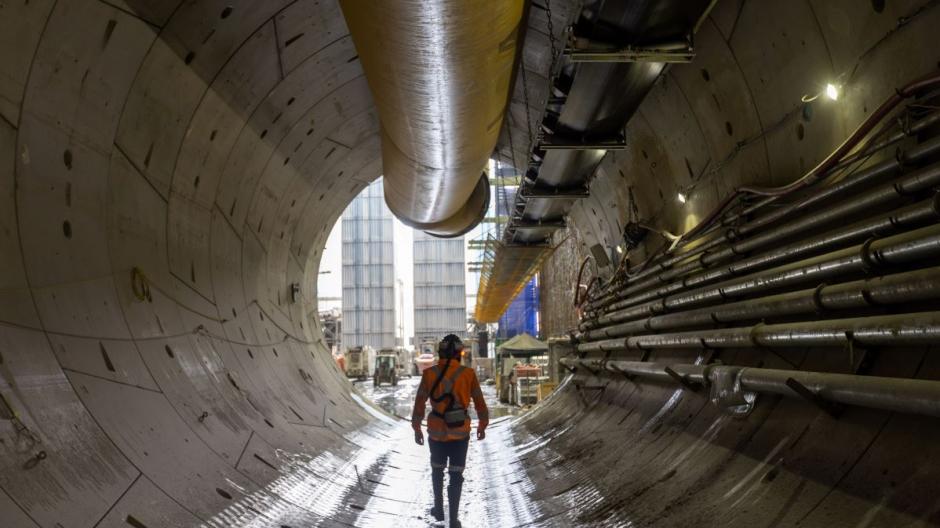
Above: The project includes the longest transport tunnels in Australia. Image courtesy of Sydney Metro.
The second phase, Sydney Metro West, features 24 kilometres of underground metro rail connecting Parramatta to Sydney CBD and costs AUD $25BN.
This is vital as Paramatta is being set up as Sydney’s future second downtown. It will be completed by 2030. The third phase includes a connection to Western Sydney Airport, costing $11BN.
The new international airport will open in 2026 and is expected to service more than ten million passengers a year, easing the burden on Sydney’s main airport which accommodates one of the busiest passenger air routes in the world.
But perhaps the most exciting phase of the project is the Sydney Metro City & Southwest section, being built right now.
The project consists of two main components. The first is a conversion of 11 stations on part of the existing Bankstown line for use by autonomous driverless trains.
The second is a new 15.5-kilometre twin-tunnel rail crossing under Sydney Harbour and through the city.

Above: A map of the new metro lines.
This new tunnel bores 40 metres below the glittery surface of Sydney Harbour where it reaches the CBD.
Carved from sandstone, it is the largest rail line to be constructed under central Sydney since the City Circle underground railway was completed in the 1950s.
This construction includes the creation of Australia’s largest underground railway cavern at Victoria Cross Station.
The excavated railway cavern is 265 metres long, 25 metres wide and 20 metres high. In terms of length, that’s comparable to Sydney’s recently completed Salesforce Tower, lying on its side. Or, for those of you not Down Under, San Francisco’s Transamerica Pyramid. It is absolutely huge.
Inside this cavern, 31 metres below the streets of Sydney, the station is currently taking shape. Escalators, a mezzanine and the platform future commuters will use are all being built.

Above and Below: Victoria Cross Station includes the largest railway cavern ever built in the country. Images courtesy of Sydney Metro.

In 2019 tunnel boring machines broke through into the cavern and connected the station to the new train network. It is these machines that have been hard at work beneath the streets of Sydney and underneath the harbour.
A total of 16 tunnel boring machines, or TBMs, will have been used on the metro expansion once it is completed. Think of them like enormous sandstone-eating worms. They operate between 35 and 58 metres beneath Sydney, diving beneath existing infrastructure.
They typically weigh more than 1,100 tonnes each and reach 120 metres in length. That’s about the weight and length of an A380, the world’s largest and heaviest passenger aircraft. They work by slowly cutting through rock, at a speed of roughly 120 metres per week.
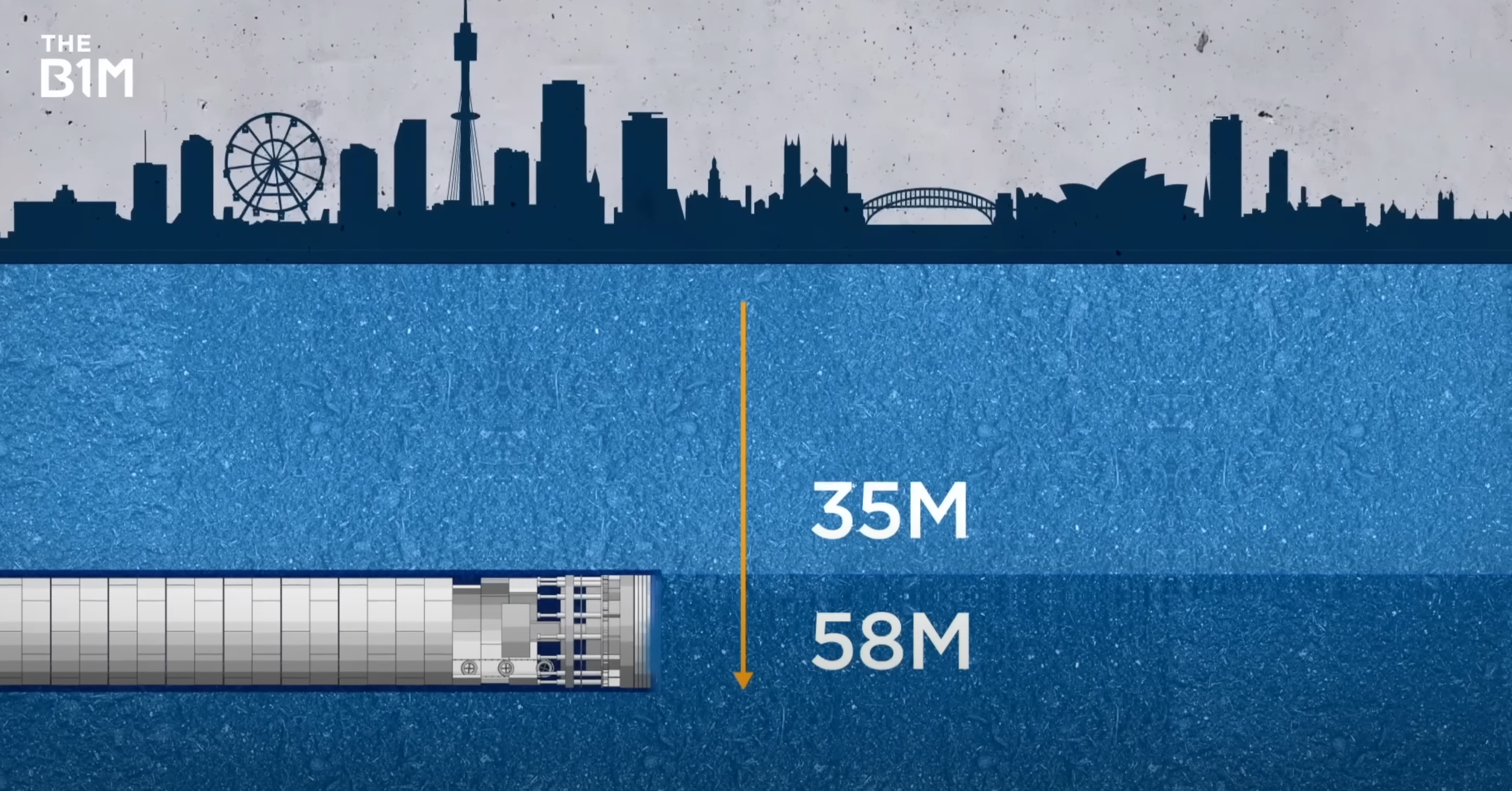
Above: The TBMs operate 35 to 58 metres below Sydney. Below: The cutterhead scoops the rocks to a conveyer belt that carries them out of the tunnel. Image courtesy of Sydney Metro.
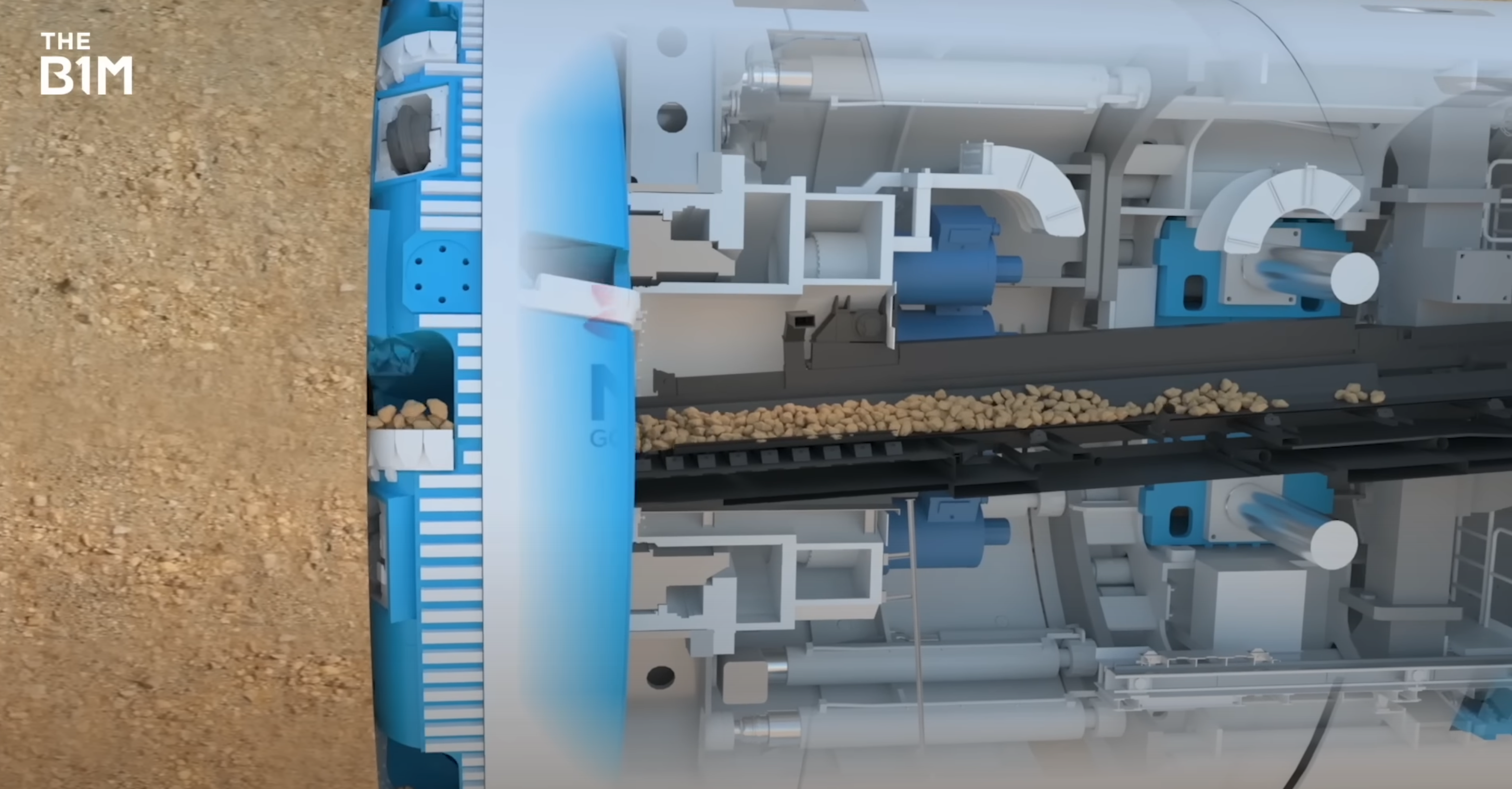
They each have a cutterhead, which in itself weighs 100 tonnes. This acts as a drill and can tunnel through rock six times harder than concrete. Rock is crushed by high-strength alloy steel discs on the cutterhead.
The rocks are then scooped into the machine’s head and onto a conveyor belt which carries them through the length of the machine and out into the tunnel behind it.
Concrete ring segments are then delivered to the building area up front and put in place to hold up the tunnel. Each concrete ring is connected to the previous one in a long chain. This is how the tunnel is built, piece by piece.
A crew of up to ten people, including an operator, work on each TBM at any one time. Inside the TBMs are offices, a kitchen and a bathroom.
A state-of-the-art navigation system keeps the machines on track at all times and ensures they don’t accidentally drill into something they aren't supposed to.
By 2030, 16 TBMs will have completed more than 56 kilometres worth of tunnels. That’s more than was built to connect Paris to London.
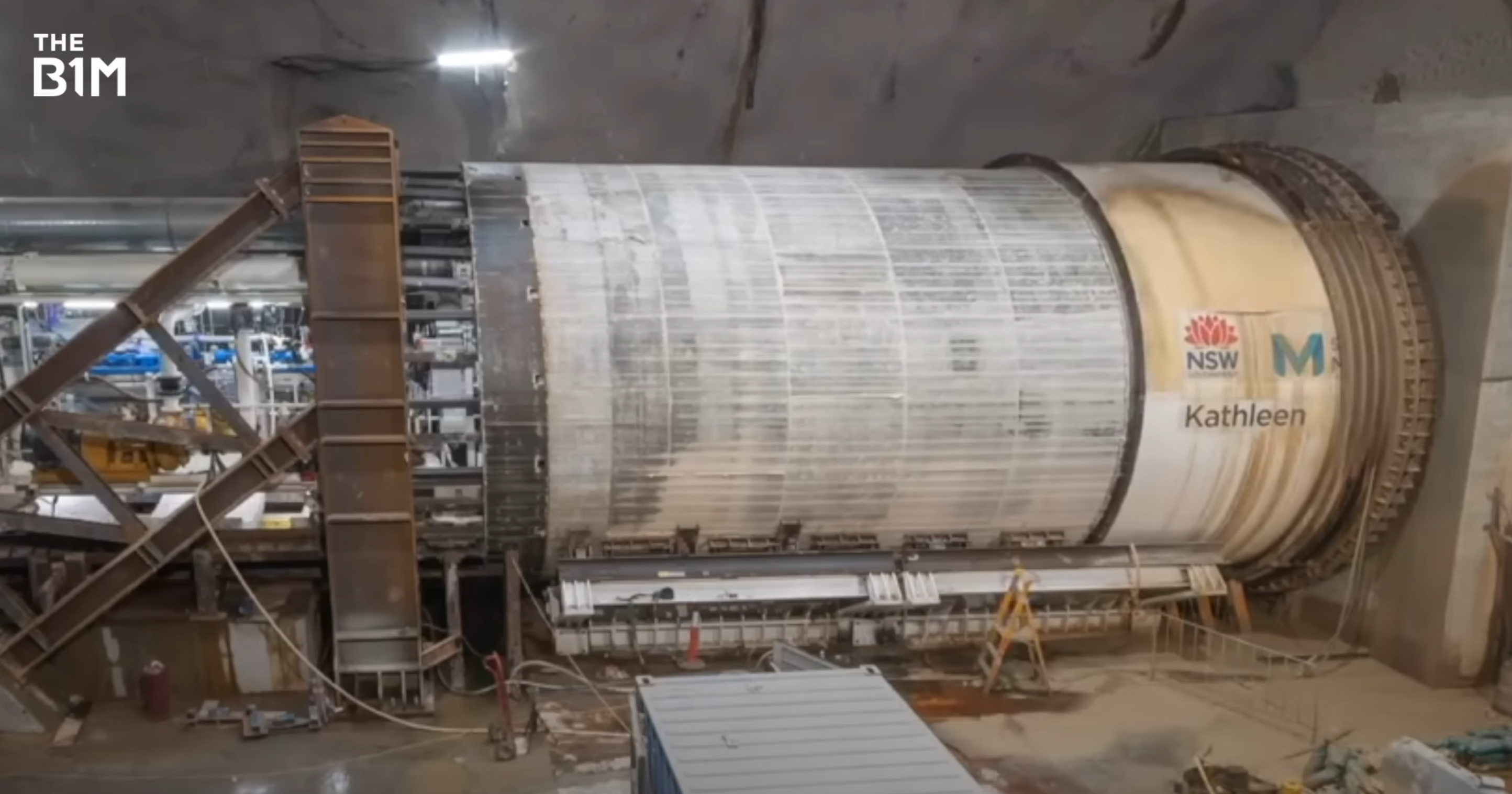
Above: One of the 16 TBMs hard at work. Image courtesy of Sydney Metro.
A specialised TBM had to be purpose-built to dig under Sydney Harbour. This type of TBM is called a “slurry TBM” and was used to tunnel through the different ground conditions under the harbour.
The slurry TBM used pipes and fluid to control the pressure in the machine by turning the excavated material into a slurry, then pumping it out.
This means the excavated rocks were crushed and mixed with fluid so they are easier to remove from the tunnel.
This massive infrastructure push will go a long way to addressing the needs of Sydneysiders now and in the future. By the middle of the century, Sydney’s population is expected to increase by up to 60%.

Above: A TBM in one of the enormous railway caverns that will soon be a fully-functioning station. Image courtesy of Sydney Metro.
Not all of these people can or should be driving cars to get around. The city is notoriously congested and has by far the most traffic out of any Australian city.
In fact the state is spending $16BN alone over the next five years just to address this congestion and expand Sydney’s roads.
But new roads won’t be enough. Sydney, like many major cities around the world right now, is facing a reckoning when it comes to its over-reliance on cars. Expanding its metro in such a massive, thorough way will provide Sydneysiders with a valid new mode of transport.
The history of Sydney has been the history of bridging its divides. This enormous $63BN megaproject brings each side of the harbour just that little bit closer.
Video narrated and hosted by Fred Mills. Additional footage and images courtesy of Sydney Metro and 7News.
We welcome you sharing our content to inspire others, but please be nice and play by our rules.








